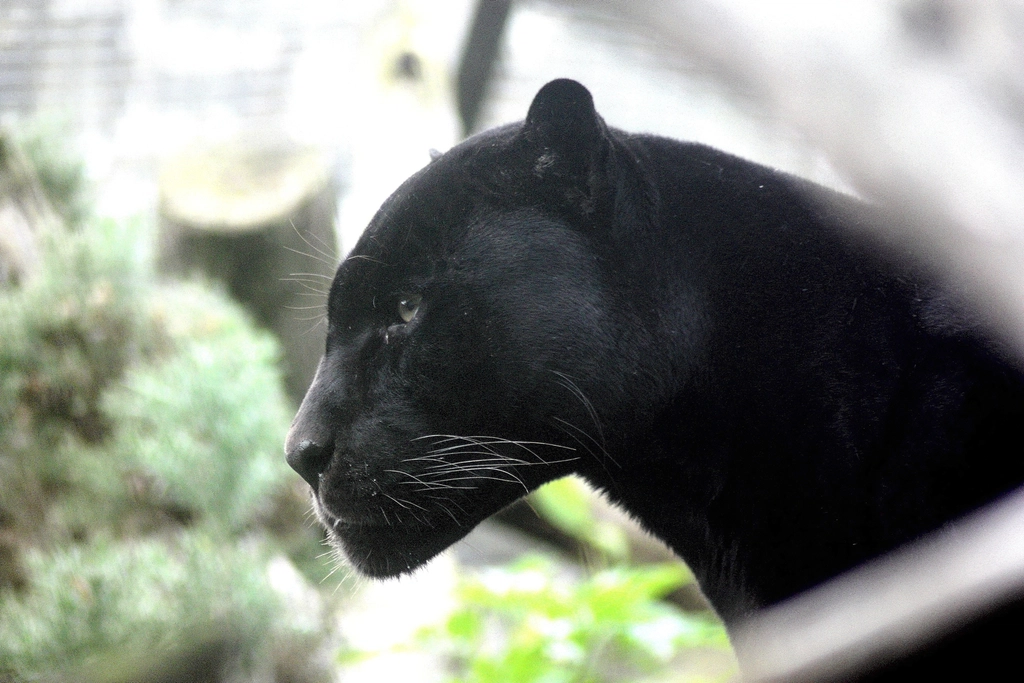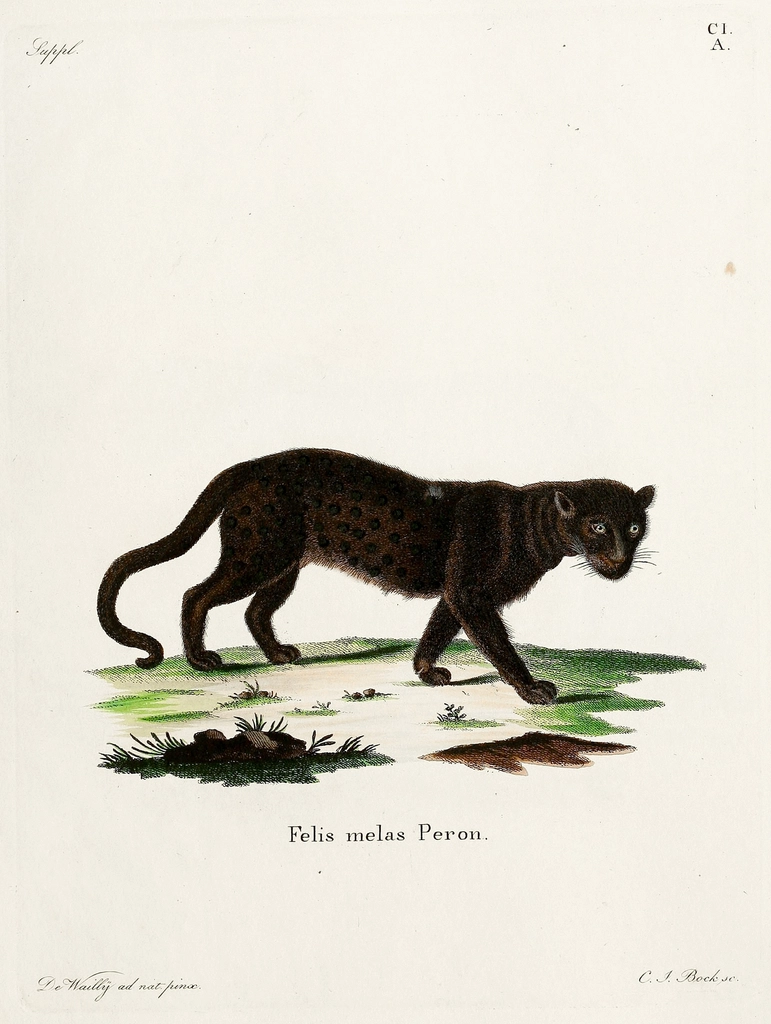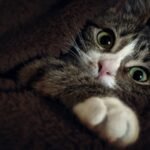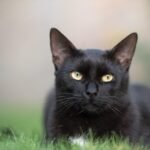Ever wondered what really makes a panther different from a leopard? Sure, their coats are eye-catching, but there’s a wild world of difference beneath those spots and shadows. From their mysterious hunting habits to the way they melt into the jungle, these big cats are full of surprises. Let’s jump into 25 fun facts that will make you see leopards and panthers in a whole new light!
Panther Isn’t a Species—It’s a Nickname

The term “panther” isn’t a specific species but rather a broad nickname, most commonly used to describe melanistic (black-coated) leopards in Asia and Africa or jaguars in the Americas. These dark beauties still belong to their respective species—it’s just their unique coloring that gives them the “panther” title. So next time you hear “panther,” you might actually be imagining a stealthy leopard or jaguar cloaked in shadow!
Leopard’s Spots Are Rosettes, Not Dots

Leopards are known for their striking rosettes—rose-like spots that are as unique as human fingerprints. These intricate patterns help them blend into their surroundings while adding to their wild beauty. Interestingly, panthers (melanistic leopards or jaguars) often have these same rosettes, but their deep black coats make the markings hard to see except in certain light. It’s a hidden pattern beneath a cloak of shadow.
Panthers Are Masters of Melanism

Panthers get their mysterious dark coats from a genetic trait called melanism—an abundance of black pigment that gives them their shadowy appearance. This natural camouflage offers a major advantage, especially in dense forests or during nighttime hunts. While their spots are still there, they’re often only visible in bright light, making panthers the ultimate stealth predators of the wild.
Leopards Show Off Their Spots Proudly

Leopards may look flashy with their bold spots, but those rosettes are nature’s clever disguise. In dappled forests and sunlit grasslands, their patterned coats break up their outline, helping them vanish into the background. This stealthy camouflage makes them expert hunters—and nearly invisible until it’s too late.
Panthers Are Night Owls

Panthers thrive under the cover of darkness, their sleek black coats turning them into near-invisible hunters at night. Their nocturnal nature and keen senses make them masters of stealth, silently moving through shadows as they track their prey. In the moonlight, they’re more than elusive—they’re ghostlike predators built for the night.
Leopards Hunt at All Hours

Leopards are the ultimate opportunists, hunting whenever and wherever the moment is right. Unlike many big cats, they’re not strictly nocturnal—if prey is active during the day, so are they. This flexibility helps them thrive in a wide range of habitats, from dense forests to open savannas. Whether it’s dawn, dusk, or high noon, leopards are always ready to strike.
Panthers Have a Shy Streak

Panthers are masters of stealth, often moving silently through dense forests or under the cover of night. Their elusive nature means sightings are rare, adding to their air of mystery and myth. Instead of seeking attention, they thrive in solitude, slipping through the wild unseen. To witness a panther in the wild is to catch a fleeting glimpse of nature’s most shadowy predator.
Leopards Are Bold and Adaptable

Leopards are remarkably adaptable and have learned to coexist with humans in surprising ways. From suburban backyards to the edges of bustling cities, they navigate urban spaces with stealth and confidence. These big cats often move under the cover of darkness, slipping through farmland and alleyways in search of prey like stray animals or livestock. Their ability to thrive in human-dominated landscapes is both impressive—and a reminder of how closely wildlife and city life can intersect.
Panthers Thrive in Dense Forests

Thick, tangled jungles are the perfect backdrop for panthers, whose dark coats blend seamlessly into the shadows. These dense, leafy habitats offer plenty of cover for stalking prey and staying hidden from threats. With their silent movements and natural camouflage, panthers become nearly invisible—ghosts of the jungle, thriving where light barely filters through the canopy.
Leopards Love a Good View

Leopards are true acrobats of the animal kingdom, using their powerful limbs to scale trees with ease—even while carrying prey heavier than themselves. Hoisting a meal into the branches not only keeps it safe from scavengers like hyenas but also gives the leopard a quiet, elevated dining spot. From their leafy perches, they can rest, eat, and keep watch over their territory with stealth and style.
Panthers’ Eyes Shine Bright Gold

A panther’s eyes often glow with an eerie golden hue in the dark, enhancing their shadowy, almost mythical presence. This glow comes from a special layer in their eyes called the tapetum lucidum, which reflects light and sharpens night vision. It allows them to see clearly even in near-total darkness—perfect for stalking prey under moonlight. That gleaming stare isn’t just beautiful—it’s built for the hunt.
Leopards Can Be Found All Over Africa and Asia

Leopards are remarkable globe-trotters, found across a vast range of habitats—from the sun-soaked savannas of Africa to the chilly, snow-covered forests of Russia and the dense jungles of Southeast Asia. This adaptability makes them one of the most widely distributed big cat species in the world. Their ability to thrive in such diverse environments speaks to their resilience, stealth, and versatility as top predators.
Panthers Are Most Common in Asia

Black panthers—melanistic leopards—are most commonly found in the dense, shadowy jungles of South and Southeast Asia, particularly in India and Sri Lanka. The thick forest canopy and low light levels in these regions give them the perfect camouflage, enhancing the advantage of their dark coats. In these lush environments, their stealth and secrecy make them the ultimate ghost cats of the jungle.
Leopards Are Solitary—but Not Lonely

Leopards are solitary by nature, preferring to roam and hunt alone. However, they stay connected with others of their kind through a network of silent signals—scent markings, urine sprays, and scratch marks on trees. These subtle signs act like a hidden language, helping leopards communicate territory boundaries, mating readiness, or simply their presence. It’s a quiet, coded way of staying in touch without ever crossing paths.
Panthers Communicate with Stealth

Panthers are the masters of stealth, taking secrecy to an art form. With their dark, velvety coats, they melt into the shadows and move in near silence, making them almost invisible in their forest homes. Unlike other big cats, they vocalize rarely, adding to their mysterious presence. To see a panther in the wild is incredibly rare—it means you’ve crossed paths with one of nature’s most elusive hunters.
Leopards Are Olympic-Level Jumpers

Leopards are powerhouse jumpers, capable of leaping up to 20 feet in a single bound—that’s roughly the height of a giraffe’s head! This explosive strength gives them a major edge when ambushing prey or escaping danger. Whether pouncing from a tree or springing through the grass, their agility and raw power make them one of nature’s most formidable predators.
Panthers Have a Softer, Silkier Coat

Panther fur is often said to be softer and more velvety than that of their spotted relatives, a subtle side effect of the genetic mutation known as melanism. This rich, dark coat doesn’t just look sleek—it feels luxurious, too. The dense, smooth texture adds to their air of mystery and elegance, making panthers seem even more elusive and regal in the wild.
Leopards Are the Strongest Climbers in the Cat World

Leopards are incredibly strong for their size, often dragging prey that’s twice their weight up into the safety of tree branches. It’s an impressive feat of power, balance, and sheer determination. This behavior not only protects their meal from scavengers but also showcases their fearless, solitary spirit. When a leopard climbs with a kill, it’s more than survival—it’s a show of quiet dominance.
Panthers Melt into the Night Like Shadows

With their inky black coats, panthers melt into the night like living shadows. This natural cloak of darkness offers both protection from threats and the perfect cover for stalking unsuspecting prey. In the moonlight, they’re nearly invisible—silent, watchful, and ready to strike. It’s stealth by design, turning every evening hunt into a masterclass in camouflage.
Leopards Have a Loud, Sawing Call

Leopards may be big cats, but they don’t roar like lions or tigers—instead, they make a distinctive “sawing” sound. This raspy, grating call, which sounds like someone dragging a saw through wood, echoes through the forest at dawn or dusk. It’s their way of announcing territory or calling to a mate—subtle, eerie, and unmistakably leopard.
Panthers Use Silence as Their Weapon

Panthers are the definition of silent predators, gliding through the shadows with barely a sound. Unlike some big cats, they rarely roar or call out, choosing instead to let their stealth speak for them. Their quiet presence makes them nearly invisible in the wild—seen only when they choose to be. In their world, silence isn’t just golden—it’s deadly.
Leopards Can Swim—And Sometimes Do

Leopards may not seek out water like tigers do, but they’re surprisingly capable swimmers. When the situation calls for it—crossing rivers, escaping danger, or cooling off on a hot day—they’ll slip into the water without hesitation. It’s just another example of their adaptability and quiet confidence. For leopards, even water isn’t off-limits.
Leopards Adapt to Almost Any Landscape

Leopards are the ultimate survivors, thriving in an astonishing range of environments—from scorching deserts and rugged mountains to open grasslands and dense forests. Their iconic spotted coats aren’t just beautiful; they’re built-in camouflage, helping them disappear into any backdrop. This blend of adaptability and stealth makes them one of the most successful big cats on the planet.
Panthers Are Icons of Mystery and Power

There’s an undeniable mystique to a panther’s presence—silent, powerful, and cloaked in shadow. Across cultures, they’ve come to symbolize everything from strength and independence to mystery and the unknown. In myths and legends, panthers often appear as guardians of the night or spirit animals guiding people through darkness. They’re not just animals—they’re living emblems of nature’s most enigmatic forces.
Which of these cats would you love to meet?

Suhail Ahmed is a passionate digital professional and nature enthusiast with over 8 years of experience in content strategy, SEO, web development, and digital operations. Alongside his freelance journey, Suhail actively contributes to nature and wildlife platforms like Feline Fam, where he channels his curiosity for the Feline into engaging, educational storytelling.
With a strong background in managing digital ecosystems — from ecommerce stores and WordPress websites to social media and automation — Suhail merges technical precision with creative insight. His content reflects a rare balance: SEO-friendly yet deeply human, data-informed yet emotionally resonant.
Driven by a love for discovery and storytelling, Suhail believes in using digital platforms to amplify causes that matter — especially those protecting Earth’s biodiversity and inspiring sustainable living. Whether he’s managing online projects or crafting wildlife content, his goal remains the same: to inform, inspire, and leave a positive digital footprint.






